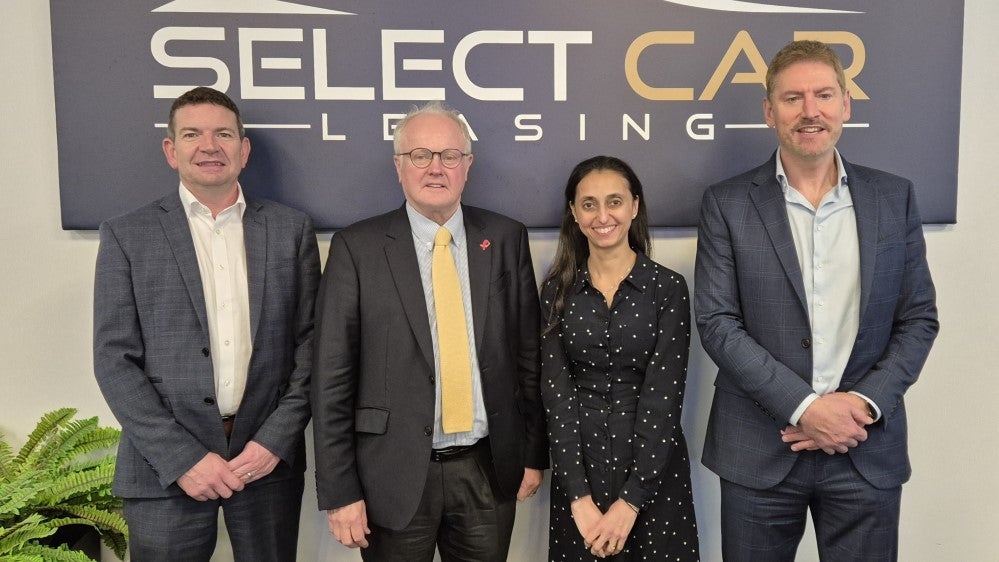While subprime motor finance
remains risky, Duncton has aggressive growth plans. Fred Crawley
reports
Evidence has emerged that lending
in the subprime motor finance market is getting back on its feet
again after two years of being battered by the banking crisis.
Last month, Duncton plc, a stalwart
subprime lender, told Motor Finance it is rolling out an
“aggressive growth plan” over the next two years, with an eye to
moving up a level in terms of volume.
Managing director Peter Minter even
went as far as to say he wants Duncton to become the leading
company in the subprime space.
Given events in the subprime motor
finance space over recent months, Minter’s ambitions seem to be
achievable. Several major funding players have exited the market
including Blue Motor Finance, Park Motor Finance and Welcome
Financial Services. This has opened up a gap in the market for an
ambitious company like Duncton to fill.
How well do you really know your competitors?
Access the most comprehensive Company Profiles on the market, powered by GlobalData. Save hours of research. Gain competitive edge.

Thank you!
Your download email will arrive shortly
Not ready to buy yet? Download a free sample
We are confident about the unique quality of our Company Profiles. However, we want you to make the most beneficial decision for your business, so we offer a free sample that you can download by submitting the below form
By GlobalDataHuge demand
 Another factor in Duncton’s favour is the huge demand for
Another factor in Duncton’s favour is the huge demand for
subprime motor finance.
It won’t, however, be plain sailing
for the company. Several strong lenders remain. One of these,
Advantage Finance, founded in the middle of 1999’s highly
competitive subprime market, has shown its strength by reporting
inter-annual profit increase in both 2008 and 2009.
Another player is ACF Car Finance,
a group of dealerships which arranges finance for customers in
partnership with sister companies The Funding Corporation (TFC) and
Cygnet Financial Services, as well as with other funders.
Furthermore, Duncton, like all
players in the subprime market, cannot afford to be gung-ho about
its business approach.
An acute awareness of the risks
associated with subprime lending is also needed if funders are to
survive in this market.
Minter seemed to hit the nail on
the head when he said: “The non-prime space is a complex market
and, as we have seen during the credit crunch, it is easy to get
things wrong.”
One key risk lies in failing to
acknowledge the fact that there are many different types of
subprime customers. Some, for example, are more likely to pay their
rentals on time than others.
In bracketing all customers as
simply subprime, lenders face making incorrect risk
evaluations.
In order to resolve this confusion,
some lessors now divide customers into different classes, including
“non-prime”, “near-prime” and “deep subprime”.
Duncton has also reacted to the
increasing differentiation of customer credit quality within the
wider subprime field.
According to head of commercial
development Shamus Hodgson: “We have introduced two new product
tiers aimed at non-prime and near-prime customers.
“This means we can now offer access
to finance to most customers that cannot be placed with a prime
funder, creating a one-stop shop.”
There are also risks associated
with not being extremely careful about customer selection.
Advantage Finance says it only
concentrates on deals which match its particular risk expertise
from the flow provided by brokers and dealerships.
As a result, it has not seen a
dramatic increase in new business volumes over recent months.
However, given the fact it has seen
year-on-year increases in profits over the last two years, its deep
sense of risk awareness appears to be paying off.
There is a downside to Advantage’s
approach to business. While it brings good returns in a market with
low competition, its way of doing business is not particularly
scalable. The underwriting attention involved in targeting the
right segment of incoming deals would be much harder to maintain in
terms of systems and staffing investments at higher volumes.
Nevertheless, there is plenty of
room for niche funders, such as Advantage, to grow if some of the
work of finding the right deals for their particular risk appetites
is done by brokers and dealers.
New technology
New technology is also helping
motor lessors in their war against risk.
Duncton has recently implemented
systems upgrades in the form of Eclipse, a web-based automated
proposal, quotation and contract processing system which, Hodgson
said, is “radically different from the traditional non-prime market
model”, and which he believes will solve the problem of increasing
lending volume without sacrificing responsibility.
Hodgson added: “We are the first
company in the UK to deliver confirmed approval decisions on
non-prime customers within 10 seconds at point of sale or within a
brokerage.
“A simplified payout process means
we can get non-prime customers into a car often the day after the
original application has been made.”
Looking to the future, some believe
the high risks involved in subprime motor finance, along with the
increasing burden of regulation associated with lending there, will
stop many new players from entering the market.
“It is down to the few remaining
funders in the sector to ensure they have the business models,
funds, and appetite to fill the gap,” Minter said.
The question this raises is whether
the handful of players in the market today can supply enough
finance to the subprime marketplace.
Some suggest this is possible. ACF,
for example, recognises that the quality of customers considered to
be subprime has improved enormously in the last two years.
ACF has staked its own growth on a
commitment to providing them with access to finance and service
levels akin to companies in the prime lending sector.
This involves the same emphasis on
placing customers with the right type of lending as recognised by
broker What Car Credit – a field in which ACF is aided by its
connection to Cygnet and TFC, as well as its growing links to other
specialists, such as Advantage.
But ACF has also undertaken
significant investment to bring its sales environment more in line
with the prime world with which many of its customers were recently
familiar with.
Of eight retail premises owned by
ACF, all are either in the process of relocation or extensive
refurbishment, or under review pending a decision to do either of
the above.
What Car Credit MD Dave Alabaster,
meanwhile, takes the view that meeting the surplus of demand in
subprime will rely in part on making retailers and customers aware
of the growing array of products and funders available to suit
specific customer types.
Alabaster said: “Many dealers still
assume that proposals just can’t be placed – and that is where the
skills of a broker come in.”
One point becomes very clear after
talking to anyone involved in the business of tackling non-prime
motor finance – the subprime market as it was in 2007 is gone, and
cannot be reclaimed by any lender, no matter how well
capitalised.
The subprime market of today is
still vast, but it is also made up of an unprecedented variety of
customer types, and an equivalent mixture of risk
considerations.
Turning the supply of funding back on will require not just
money and energy, but a concerted effort by dealers, brokers and
lenders to ensure the right proposals are ending up with the right
underwriters.








